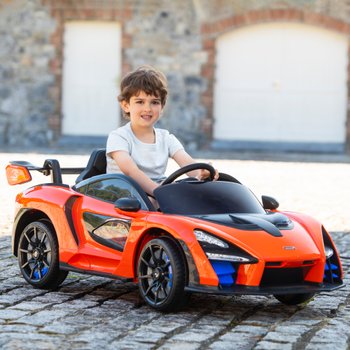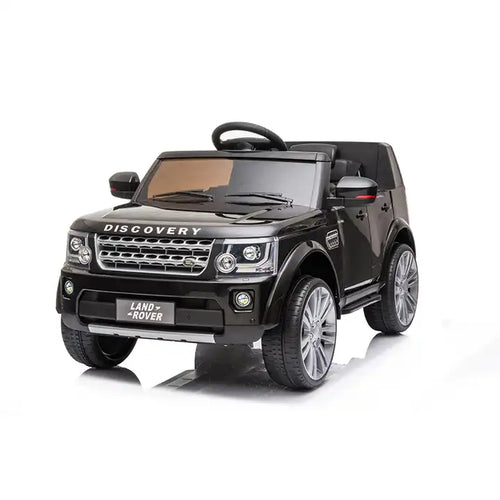It is essential to consider safety features when selecting a car ride for your kids. These will help to keep them safe and happy when they play. Seat Belts, for example are a security measure that you should consider.
Pros They are a great way to keep your child secure while riding in their car. They decrease the likelihood of your child falling out in play or being removed from the car. These belts offer additional security especially in abrupt stops or turning.
Pros - Not all ride-on automobiles have seatbelts. This includes those specially designed for young children. Additionally, children may find the seat belts uncomfortable or restricting, resulting in resistance or refusal to use them.
Sturdy Construction
Pros - A car constructed with high-end materials and a sturdy structure will last longer and resistant to damage. It will also provide long-term reliability and safety. It can withstand all the demands of play and provide stability.
Cons - Strong construction can be costly and therefore, isn't affordable for some families. The more heavy materials used could hinder the maneuverability and mobility.
Low Center Of Gravity
Pros-Ride-ons with lower center of gravity will be less likely to tip over, which reduces the risk of accidents. They are more stable and provide better balance, especially during turns or maneuvers.
Cons - Ride-on cars that have a low centre of gravity may compromise the ability to drive off-road or have a higher ground clearance, which can limit their flexibility.
Parental Remote Control -
Pros – Remote-controlled ride on vehicles allow parents to supervise and supervise their children's play. They also provide a higher security and parental control. Parents can intervene if emergencies arise, steer difficult terrain or prevent collisions.
Cons - Remote control for parents may limit children's independence and autonomy as they depend on parental guidance and assistance during play. Remote-controlled models are more costly than ride-on cars that are operated by hand.
Speed Limiters
Pros: Ride-on cars with speed limiters, or speeds that can be adjusted allow parents to control the maximum speed, and decrease the possibility of accidents and collisions. Parents can raise the speed of the ride-on car as their child gets more confident and proficient.
Cons - Children could rapidly outgrow their slower speeds. This can cause frustration or even dissatisfaction. Additionally, certain models might not come with speed limiters or require additional options or features.
Safe Start Technology -
Pros: Safe Start Technology helps the ride-on cars start and stop smoothly. This minimizes the chance of sudden jerks which could cause instability or even startle the child. It makes riding more comfortable and safer.
Cons: Ride-on vehicles equipped with safety start could cost more than standard models. Moreover, children may not find the gradual acceleration to be more interesting or exciting as fast starts and stop.
Visibility Enhancements
Pros: Ride-on vehicles that have enhanced visibility such as taillights and headlights that use or reflective materials can increase visibility even in dimly lit or low lighting conditions. These vehicles improve safety because they can make the car visible for other pedestrians or cars.
Cons: Visibility improvements can cause battery drain more quickly or increase the complexity of the design of the ride-on vehicle and increase the chance of maintenance or malfunctions.
When you consider these safety features and weighing their advantages and disadvantages, you can pick the ride-on vehicle that is focused on your child's safety, while also providing a fun and enjoyable play experience. Follow the top rated ride on toys for more tips including race car toy car, remote control childrens car, childs ride on car, toy the car, digger ride, ride a toy, remote control childrens electric cars, childrens ride on, kids electric cars, kids electric cars and more. .

Why And How Do There Exist Different Levels Of Skill For Electric Ride-On Vehicles?
The majority of electric rides have various settings for speed and control to cater for children of different abilities, and provide the most enjoyable and safe riding experience. Here's the reason and how these features are put into place - Safety
Children differ in their proficiency and confidence when it comes to operate ride-on vehicles. Parents can match the maximum speed of the ride-on vehicle to their child's ability by offering a variety of speeds. This decreases the likelihood for collisions and accidents.
Lower speed settings are ideal for beginners or younger children that are just beginning to learn how to operate the ride-on vehicle, while higher speed settings can be used by older children or those with more experience.
Gradual Learning Curve -
With a variety of speed settings, electric ride-on cars help children learn to drive gradually. Beginners will gain confidence as they become familiar with the controls at slower speeds.
As their child gains driving skills, parents can increase the speed. This gives them a feeling of accomplishment and progress.
Parental Control
Certain electric vehicles have parental control features that allow parents to limit maximum speeds of the car by remote. This feature provides parents with security knowing that they can intervene or adjust the speed to ensure their child's safety.
The model you choose will determine parental control options could include remote speed limits as well as emergency stop buttons or remote steering capabilities.
Adaptability
Children's interests and abilities will alter as they grow and grow. These changes can be accommodated through electric ride-on vehicles with multiple speeds.
As a child develops confidence and ability, they are able to progress to higher settings. This can result in a more thrilling ride. In the opposite direction, parents can reduce the speed of the ride for their children or for their peers.
Customization -
Different speed settings permit individualization and personalization of the experience of riding depending on personal preference and needs. The speed can be adjusted depending on the child's needs and level of enjoyment.
Some electric rides-on cars have additional controls, such as adjustable brake sensitivity or acceleration. They allow the driving experience be tailored to meet specific needs.
Electric ride-on cars that have various settings for speed as well as control options and other features that allow for a custom and safe ride. They are suitable for children with different skills and interests. These features build confidence, promote skill development and provide fun adventures for children while allowing parents the opportunity to supervise, intervene, or monitor their child in the event of need. Read the top find out more for McLaren kids car for website recommendations including electric ride along car, childs car toy, electric toy car, electric rideons, toy cars, toy car for car, remote control childrens electric cars, childs ride on car, electric two seater cars, ride ons and more. .

What Are The Different Kinds Of Remote Controlled Cars For Children? What Are The Pros And Pros And
The diverse sizes, designs, prices, and types of remote control children's car are readily available to meet the requirements and budgets of everyone. The pros and cons, along with the dimensions and types, as well as the costs of remote-controlled vehicles for children are listed below.
Electric RC Cars – Battery-powered remote controlled cars suited for indoor or outdoor use. There are a variety of types of RC cars available including Buggies, trucks, and sportscars.
Nitro RC Cars – Gas-powered remote controlled cars with more power and performance However, more expertise and maintenance is required to operate. They tend to be larger and more costly than electric RC cars.
Scale Models: Remotely controlled replicas that include real vehicles such as cars, planes, trucks and boats. Scale Models can be found in a variety of scales that range from 1-10 to 1-24. Larger scales give more detail and realistic appearance.
Sizes -
Remote control cars for children come in a variety of dimensions. The range of sizes ranges from micro-sized replicas to huge-scale models. The size and weight of the car can affect its performance.
Micro-sized vehicles are compact and lightweight. This makes them ideal for indoor use with younger children. These larger models have more power and durability and are perfect for racing outdoors and off-road driving.
Prices
The cost of remote-controlled children's cars vary depending on factors like dimensions, features, brands, and build quality.
Electric and Nitro RC vehicles in larger scale can cost anywhere from $100 to $500.
Models and high-end hobby RC cars cost from several hundred to more than a 1000 dollars, depending upon the level of detail.
Pros and Cons -
Pros -
Remote Control Children's Cars - These cars are great for entertainment. They are able to be used by adults and children alike.
Running an R/C car can help children develop spatial awareness, problem-solving skills and hand-eye coordination.
Social Interaction. You can go on the RC cars with your friends and family and encourages social interaction.
Customization - Many RC vehicles can be customized with aftermarket upgrades, parts and accessories that boost the performance and appearance.
Cons
Cost - High-end models that have advanced features, such as hobby grade automobiles, can be very expensive.
Learning Curve - Controlling an RC vehicle requires practice and expertise, and smaller youngsters may have difficulty when it comes to the controls at first.
Maintenance – RC vehicles need regular maintenance. This includes cleaning, lubrication as regular repairs and replacements of parts.
Safety Concerns RC cars pose a safety risk, and can cause electrical hazards, accidents and falls if not used under adult supervision.
In general, remote-control children's vehicles are an exciting and educational experience for children of all ages. However, when deciding on the best model for your child consider things like the price dimensions, size, features, and security. Hobby-grade RC cars are suitable for older children and those who are avid, while less complex models are suitable for younger children and beginners. Take a look at the most popular kids cars kidscars.co.uk tips for more info including childrens electric ride on, two seater childrens electric cars, electric ride on, digger ride, cars pedal car, kidscars, ride a toy, race car toy, ride on toy, toy a car and more. .
